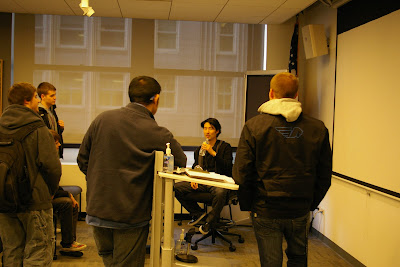
OutFront
A New Firm Lures Brokers from Big Wall Street Houses
Matthew Schifrin, 01.18.10, 12:00 AM ET
Stockbrokers, a.k.a. financial advisors, were always the other guys on Wall Street, watching their colleagues in the trading and investment banking departments rake in huge bonuses while they were wearing out their fingertips with cold calls. The recent turmoil on Wall Street--the deaths of Bear Stearns and Lehman Brothers, the struggles of Merrill Lynch and Wachovia's brokerage unit-- has made their lives worse. Brokers find themselves having to explain to clients why they should entrust money to the firms that employ them.
"I don't think there are many brokers out there who wouldn't tell you that they feel disenfranchised," says Mindy Diamond, president of recruiting firm Diamond Consultants.
Solution: Break free. The broker or a gang of brokers sets up a new firm to help clients invest. The breakaway broker can use products (like exchange-traded funds) wherever they might come from, clearing services from one firm and custody from yet another.
In 2009 Schwab helped 156 groups of stockbrokers break free of big firms, setting up registered investment advisory firms. Fidelity attracted 185 brokers, and Pershing brought in 32 new RIAs to its custodial platform. TD Ameritrade Institutional attracted 170 advisor groups.
Possibly the most compelling of the new opportunities for breakaway brokers is a Chicago firm called HighTower. It offers brokers with at least $100 million under management what it describes as an "open source" alternative to firms like Merrill and Morgan Stanley Smith Barney.
In the brokerage business so-called open architecture has been around since the 1980s, when Charles Schwab & Co. began allowing independent advisors to choose from a host of investment managers and products. HighTower's two founders, Elliot Weissbluth and Drew Kornreich, expanded this model so that brokers affiliating with their firm also have the ability to choose from various custody firms, including JPMorgan Chase and Schwab, and clearing firms like Pershing and Fidelity's National Financial.
This innovative business model caught the attention of David Pottruck, former chief executive of Charles Schwab. In 2004 Pottruck was unceremoniously ousted from that job and went into exile. Pottruck, 62, decided he wanted back in. So he, along with Philip Purcell, former chief executive of Morgan Stanley and Dean Witter; New York financier Morris Offit; the fund vendor Franklin Templeton; and several others invested $65 million to help get HighTower going in April 2008. In December 2009 Credit Suisse subsidiary Asset Management Finance led a financing round that injected $100 million in capital to pay bonuses to brokers signing on.
One of the first big producers to sign on in 2008 came from Morgan Stanley. The Bapis Group, run by Nicholas Bapis and his two adult children out of Salt Lake City and New York City, brought in $700 million.
"The benefit of having multiple investment managers, custodians and clearing firms all competing for our advisors' business is that you get to drive down costs and increase quality and empower the advisor to be the quarterback for his clients," says Pottruck.
So far HighTower has attracted $16 billion in assets spread over eight offices. Larry Gilbert, 40, was a heavy hitter in Goldman Sachs' private wealth group in Chicago before he joined HighTower in February 2009. "I left Goldman because I wanted to be a true fiduciary," says Gilbert. He says Goldman's pay was structured to encourage advisors to sell Goldman products first. "During the financial crisis these products didn't hold up," he says. Goldman denies Gilbert's claims.
HighTower brokers also run their own profit-and-loss statements, so instead of keeping 30% to 40% of gross fee production in W-2 earnings, they reap the benefit of all revenue associated with their clients, including interest spreads earned by lending idle cash in cash-rich accounts to other clients buying on margin. After paying their own expenses, they are typically left with 70% to 80% of their revenue, which they split with HighTower. Another draw is that its advisors own 25% of the equity of HighTower and have a real say in how things are run. "This model isn't fully baked. We need their help," says Chief Executive Weissbluth, 42.
For Pottruck, who recently announced that he would become cochairman of the firm, it appears as if this could be his second coming. Says Pottruck, "It is now the full-time focus of my energy. So after four years I find myself back in financial services and having a lot of fun."





















































